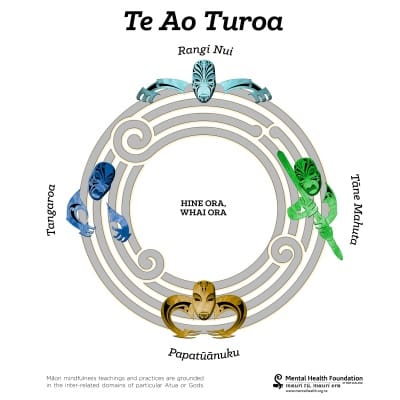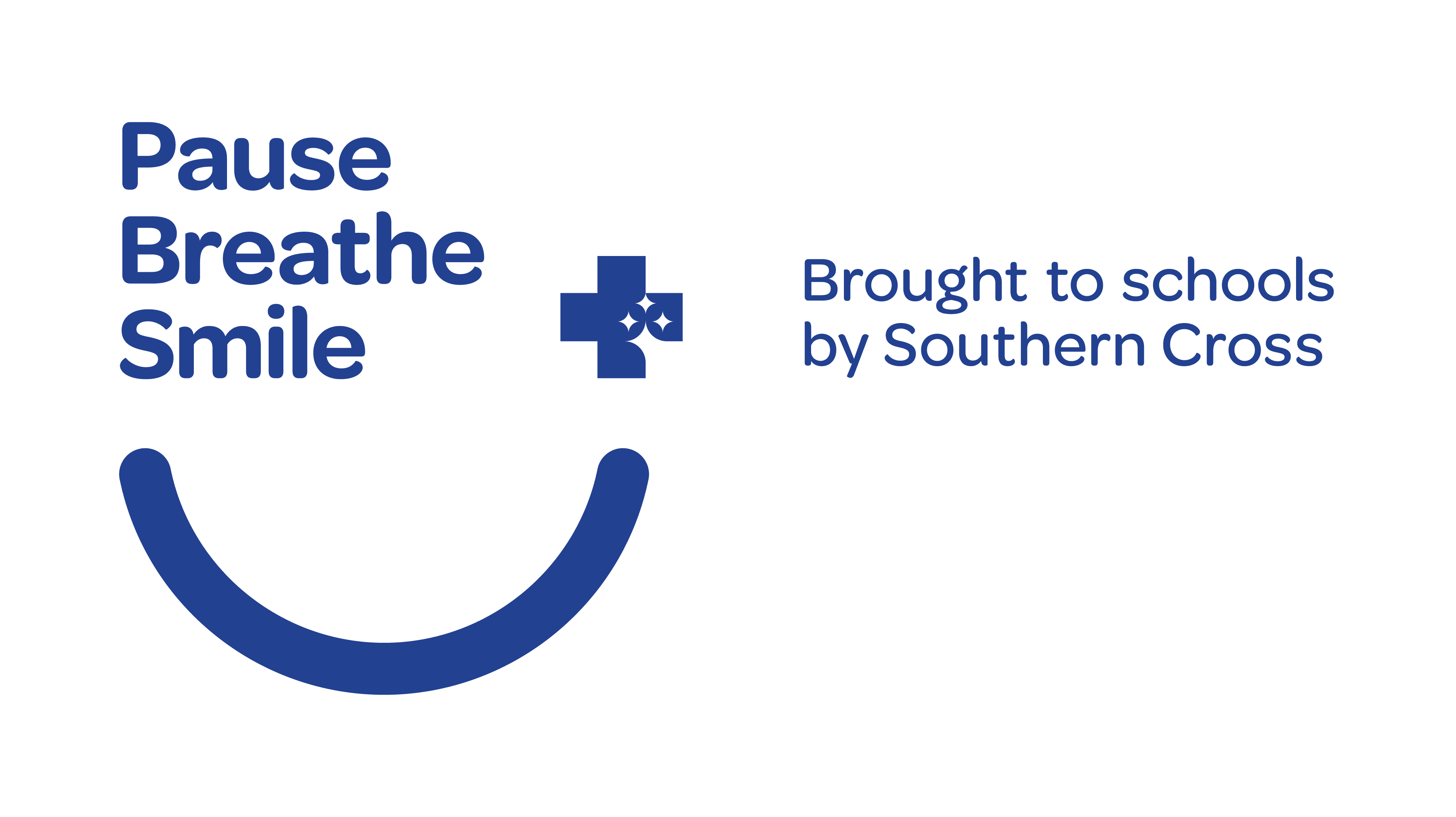Hine Ora, Whai Ora
For Māori, mindfulness practices for healing and wellbeing enhance the connection to Te Ao Wairua (the spiritual world) and Te Ao Turoa (the natural world).
Nga Atua (Gods)
Māori mindfulness teachings and practices are grounded in the inter-related domains of particular Atua or Gods:
Rangi Nui – Sky Father
Looking to the heavens helps us to relax and experience a sense of oneness in body, mind and spirit. Ranginui represents the space and time mindfulness gives us to reflect and enjoy moments of tranquillity. This reflection time helps strengthen us so we can continue to flourish in Te Ao Hurihuri, our ever-changing world.
Papatuānuku – Earth Mother
Papatuānuku is our protector, provider, nurturer and teacher. Mindfulness helps us to stay grounded and connected to Papatuānuku. When we walk on Papatuānuku with our bare feet, not only do we feel connected to her, we also feel protected. When we look towards the hills, mountains and sea, we take in the beauty around us that fills the spirit, nourishes the mind and strengthens the body.
Tāne Mahuta – God of the Forest
When we walk through the ngahere (bush), Tāne Mahuta gives us a sense of peacefulness that energises our wairua (spirit), refreshes our hinengaro (mental and emotional wellbeing), and strengthens our bodies as well.
We see the beauty of Tāne’s domain, the multitudes of colours that dance in and around the flora and fauna of the forest and out towards the mountains and the sea. Artists frequently capture that magic in weavings, canvas or carvings that tell about the wonders of Tāne.
Meditation in the world of Tāne was practised by our tupuna (ancestors) to help them achieve greater levels of learning, awareness and understanding. Through this they were able to gain, retain, recite and teach knowledge in their area of expertise, be it whakapapa (genealogy), navigation by the stars, gardening, composition of waiata (songs and chants) or whaikorero (oratory).
Tangaroa – God of Water
Tangaroa is associated with all forms of water – seas, lakes and rivers. When we immerse ourselves in these waters we cleanse our spirit, mind and body. The sound, sight and smell of water is refreshing. Water is needed to sustain physical and spiritual life, and is a source of many forms of nourishment for the body.
Water is also used to accompany karakia (ritual chants, prayer, blessings) to cleanse, protect or return people to a state of feeling strengthened and free from things that have burdened them.
Te Waa Po, Te Waa Ao
Te Waa is the time needed for wellness and healing on all levels – emotionally, spiritually, physically and mentally. Healing may have outward or inward expressions, take place internally or externally and in the context of what surrounds you.Te Waa involves the whole essence of a person; it’s the time to bring everything back into balance and rhythm.
Cultural practices
Maori cultural practices that support mindfulness include manaakitanga (respect, generosity and care for others); aroha (love, compassion and deep affection); kaitiakitanga (look after, care for and protect) and karakia (recite blessings, forgiveness and compassion.)
Waiata
This waiata describes how the elements refresh a troubled mind and free the spirit from doubts and fears.
Purea Nei

- Purea nei e te hau
Horoia e te ua
Whitiwhitia e te ra
Mahea ake nga poraruraru
Makere ana nga here.E rere wairua, e rere
Ki nga ao o te rangi
Whitiwhitia e te ra
Mahea ake nga poraruraru
Makere ana nga here,
Makere ana nga here. - Scattered by the wind
washed by the rain
and transformed by the sun,
all doubts are swept away
and all restraints are cast downFly O free spirit, fly
to the clouds in the heavens,
transformed by the sun,
with all doubts swept away
and all restraints cast down.
Yes, all restraints are cast down
